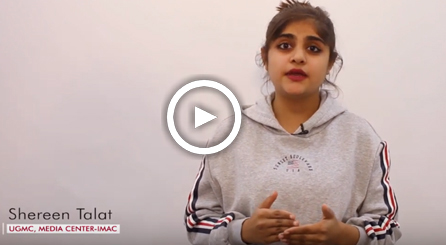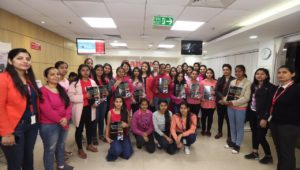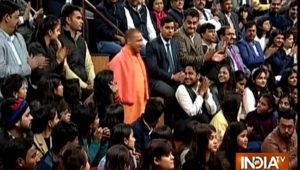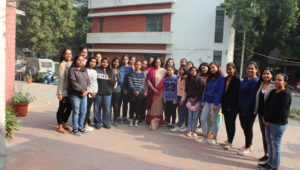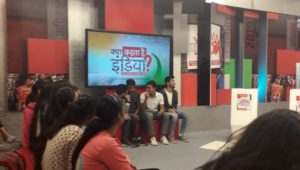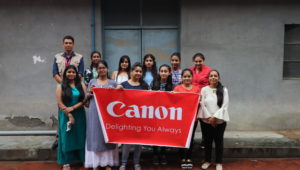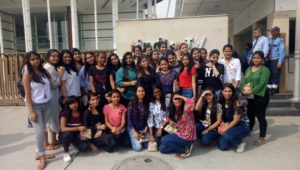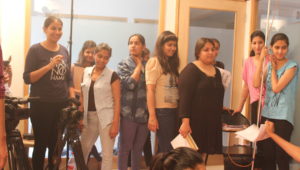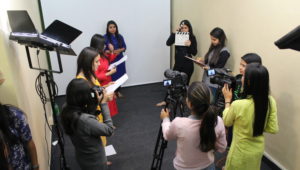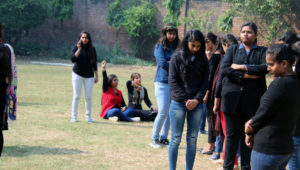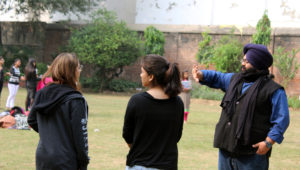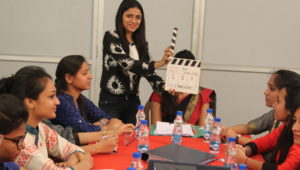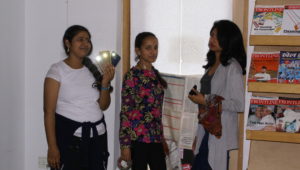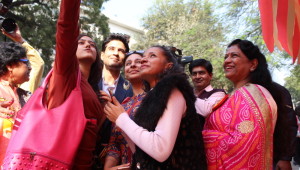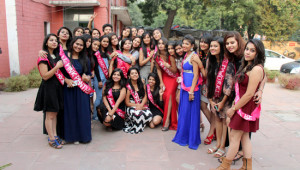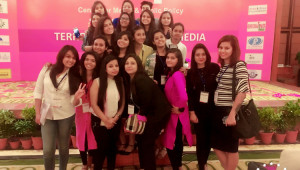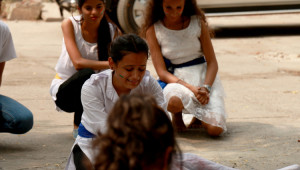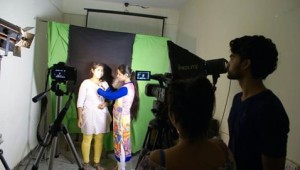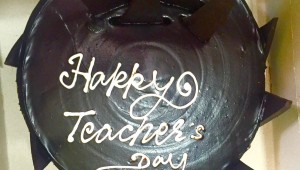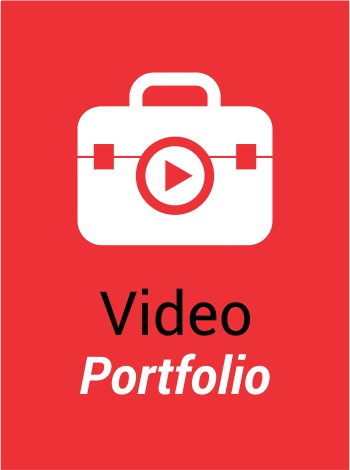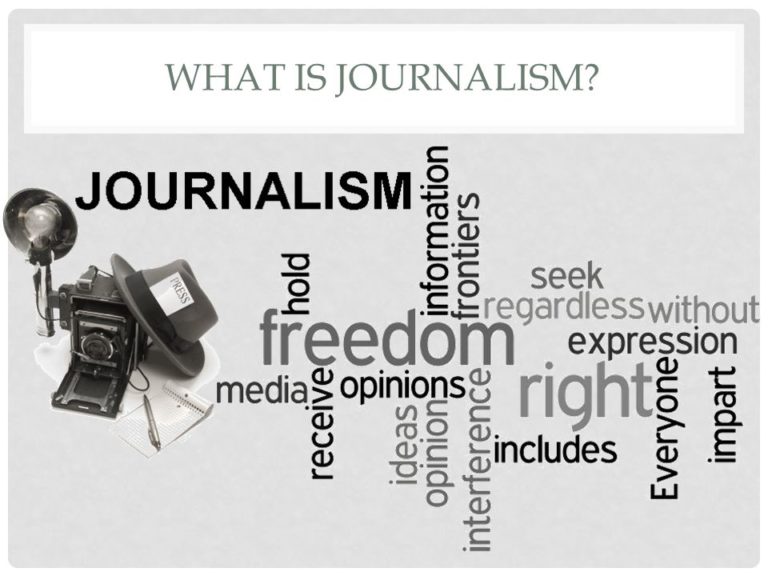 Here are following terms of journalism, helping you to pursue Mass Communication:
Here are following terms of journalism, helping you to pursue Mass Communication:
- Angle – The approach or focus of a story.
- Assignment – A job given to a journalist by an editor.
- Attribution – to mention the original source of material (usually pertaining to a quote from a copyrighted source)
- Beat – The area or subject that a reporter regularly covers.
- Bias – Where the article shows favoritism or disapproval toward a subject in an article
- Blog – An online commentary or diary often written by individuals about hobbies or areas of specialist interest.
- Blurb – Brief introduction to the writer, usually following the headline.
- Break a story (breaking news) – When a story is first published or aired.
- Broadcast – communicating using radio and/or TV.
- Byline – A journalist’s name at the beginning of a story.
- Caption – Text printed below a picture used to describe it and who took it. Sometimes called a cutline.
- Citation – To mention the source of original material or quotes.
- Column – A regular feature often on a specific topic, written by the same person who is known as a columnist.
- Copy – Main text of a story.
- Correspondent (or on-the-scene reporter) is a journalist or commentator who contributes reports to a newspaper, radio, or television news from a remote, often distant, location. A foreign correspondent is in a foreign country.
- Cover story – Leading story used on front cover.
- Credit a source – A reporter must always indicate where the information in the story came from. If the source wants to remain anonymous, the reporter should credit the source as in the following example: “The President is involved in secret meetings with France,” said a source close to the White House who spoke on condition of anonymity.
- Deadline – The time at which an editor requests a journalists to finish an assignment.
- Defamation – Information that is written by one person which damages another person reputation.
- Edit – the process of reviewing a news story, revising the writing and checking it for mistakes before it is published or broadcast.
- Editor – Someone who prepares material for print or broadcast.
- Editorial – an opinion column written by the editor of a newspaper.
- Editorialize – To write in an opinionated way.
- Endnote – Text written at the end of an article stating the authors credentials.
- Feature – A longer, more in-depth article.
- Follow-up – An update on a previous story.
- Hard copy – When the article is printed out on paper.
- Headline – The main title of the article.
- Hearsay – When someone relates a story without evidence to back it up.
- Journalist – Someone who writes, researches and reports news, or works on the production of a publication. Sometimes shortened to journo, hack or scribe.
- Layout -(noun) How the page is designed and formatted.
- Lead (also: lede) – the opening sentence or two of an article that contains who, what, where, when, why/how.
- Leading questions – A question that contains the predicted answer within the question.
- Libel – A case for defamation. Defendent would need to show claims were true, fair comment or an accurate record of parliamentary or court proceedings.
- Masthead – Main title section and name at the front of a publication.
- Mug shot – Police photograph of someone who has been booked on a charge.
- Obituary (obit) – a listing of someone who has recently died. Usually contains the person’s cause of death, background, surviving family members, and services.
- Off the record – Comments made that are not intended for publication or to be aired.
- On the record – Information given by a source that can be used in an article.
- Op-ed (opinion editorial) – A feature, usually by a prominent journalist, presenting an opinionated story.
- Photojournalist – a photographer who covers a news story.
- Political cartoon/editorial cartoon – a cartoon that expresses a bias about a current issue in the news.
- Puff piece – A news story that presents its subject in a favorable light, ignoring any controversial issues.
- Reporter – Someone who writes and researches news stories.
- Retraction – A withdrawal of a previously-published story or something that was presented as a fact, but which is either untrue or not proven.
- Run – To print or air a story.
- Scoop – An exclusive or first-published story.
- Source – An individual who provides information for a story.
- Splash – Front page story.
- Syndication – A column that is printed in a large number of newspapers.
- Tabloid – A newspaper that prints sensational material that usually is exaggerated or untrue.
- Tip – A lead of piece of new information about a new story.
- Wire service – Stories or photographs sent electrically to your desktop.
[This article is published by Media Center-IMAC in interest of student awareness and career guidance. Media Center-IMAC specializes in Post-Graduate/Under-Graduate diploma courses in Media SZtudies and Mass Communication & TV journalism. With practical oriented and industry specific course, Media Center- IMAC is a prominent institution in Delhi.
Our alumni have proven themselves in the media world and are currently working at prestigious media organizations and top news channels. Besides full time diploma courses, Media Center-IMAC also offers specialized certificate courses in TV reporting, Digital marketing, video editing, radio jockeying, photography and many more.
For more info, visit: http://www.mediacenterimac.com/
Or email at: mediacenterimac@gmail.com
Or call at: 011 43489010, 8076807939.]








